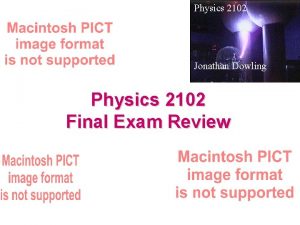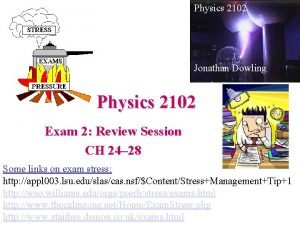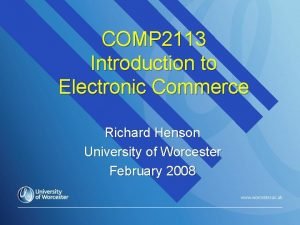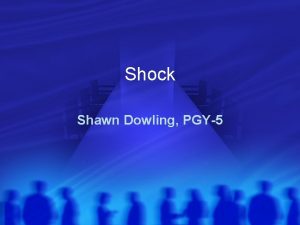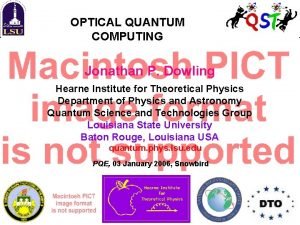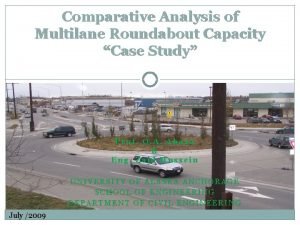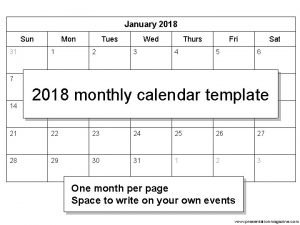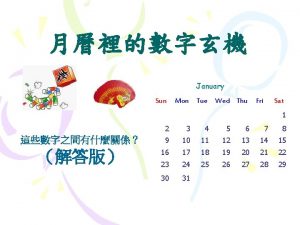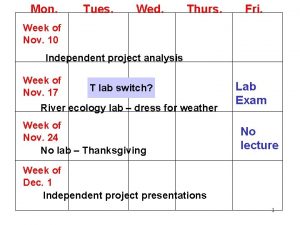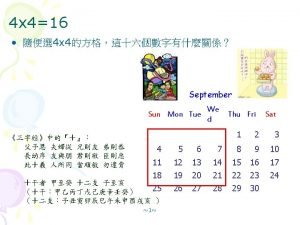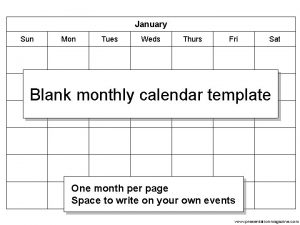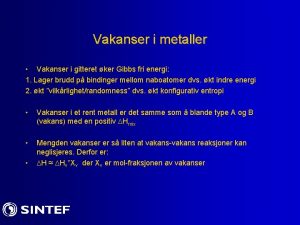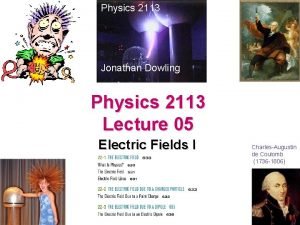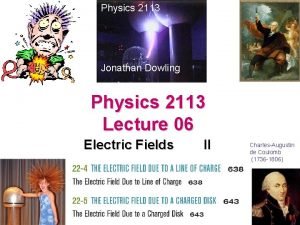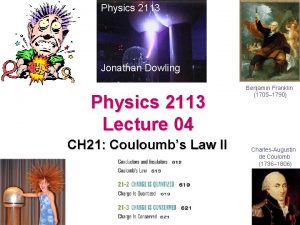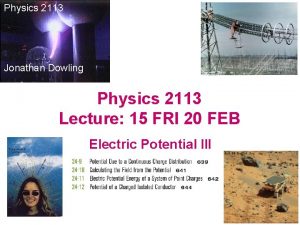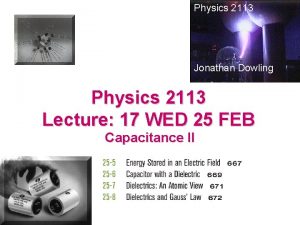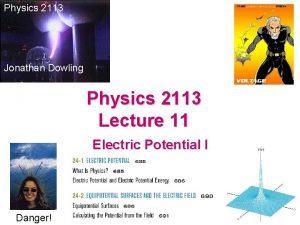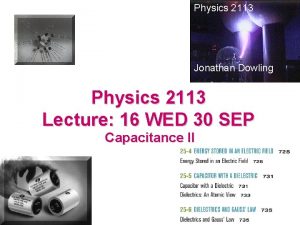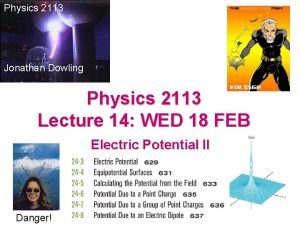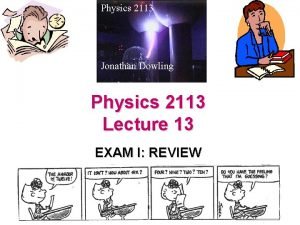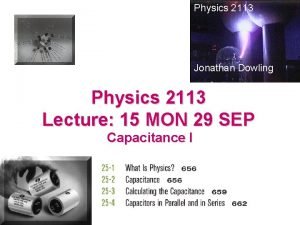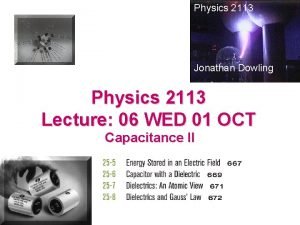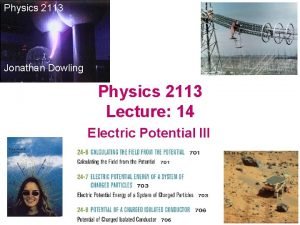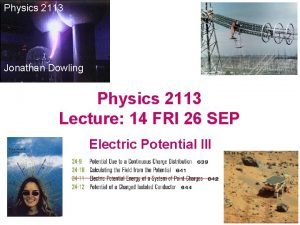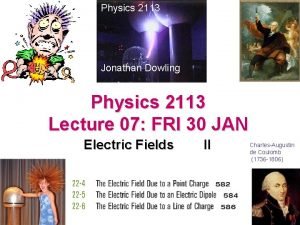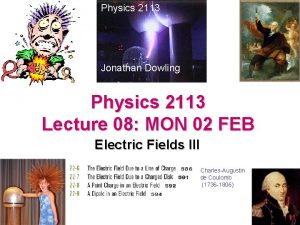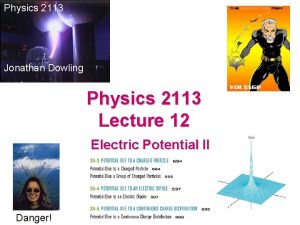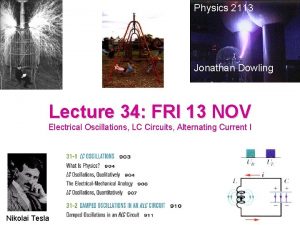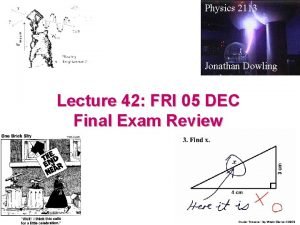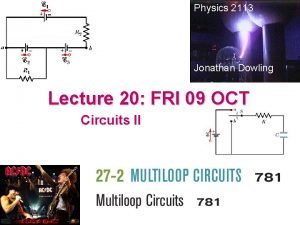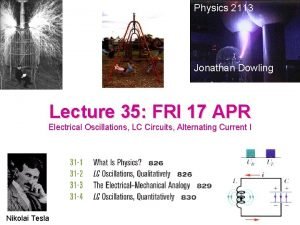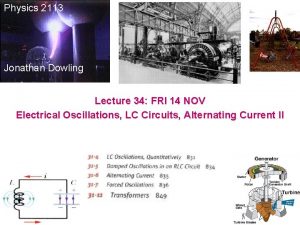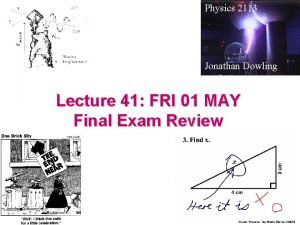Physics 2113 Jonathan Dowling Lecture 31 FRI 06



































- Slides: 35

Physics 2113 Jonathan Dowling Lecture 31: FRI 06 NOV Induction and Inductance III Fender Stratocaster Solenoid Pickup

Changing B-Field Produces EField! • We saw that a time varying magnetic FLUX creates an induced EMF in a wire, exhibited as a current. • Recall that a current flows in a conductor because of electric field. B d. A • Hence, a time varying magnetic flux must induce an ELECTRIC FIELD! • A Changing B-Field Produces To decide direction of E-field use Lenz’s law as in current loop. an E-Field in Empty Space!

Solenoid Example • A long solenoid has a circular cross-section of radius R. • The magnetic field B through the solenoid is increasing at a steady rate d. B/dt. • Compute the variation of the electric field as a function of the distance r from the axis of the solenoid. First, let’s look at r < R: B Next, let’s look at r > R: magnetic field lines electric field lines

Solenoid Example Cont. i B E E(r) i r r=R Added Complication: Changing B Field Is Produced by Changing Current i in the Loops of Solenoid!

Summary Two versions of Faradays’ law: – A time varying magnetic flux produces an EMF: –A time varying magnetic flux produces an electric field:

30. 7: Inductors and Inductance: An inductor (symbol ) can be used to produce a desired magnetic field. If we establish a current i in the windings (turns) of the solenoid which can be treated as our inductor, the current produces a magnetic flux FB through the central region of the inductor. The inductance of the inductor is then The SI unit of inductance is the tesla–square meter per ampere (T m 2/A). We call this the henry (H), after American physicist Joseph

Inductors: Solenoids Inductors are with respect to the magnetic field what capacitors are with respect to the electric field. They “pack a lot of field in a small region”. Also, the higher the current, the higher the magnetic field they produce. Capacitance C how much potential for a given charge: Q=CV Inductance L how much magnetic flux for a given current: Φ=Li Using Faraday’s law: Joseph Henry (1799 -1878)


loop 1 loop 2 (30– 17)


Example • The current in a L=10 H inductor is decreasing at a steady rate of i=5 A/s. • If the current is as shown at some instant in time, what is the magnitude and direction of the induced EMF? (a) 50 V (b) 50 V i • Magnitude = (10 H)(5 A/s) = 50 V • Current is decreasing • Induced EMF must be in a direction that OPPOSES this change. • So, induced EMF must be in same direction as current

The RL circuit • • • Set up a single loop series circuit with a battery, a resistor, a solenoid and a switch. Describe what happens when the switch is closed. Key processes to understand: – What happens JUST AFTER the switch is closed? – What happens a LONG TIME after switch has been closed? – What happens in between? Key insights: • You cannot change the CURRENT in an inductor instantaneously! • If you wait long enough, the current in an RL circuit stops changing! At t = 0, a capacitor acts like a solid wire and inductor acts like break in the wire. At t = ∞ a capacitor acts like a break in the wire and inductor acts like a solid wire.

30. 8: Self-Induction:

30. 9: RL Circuits:

30. 9: RL Circuits: If we suddenly remove the emf from this same circuit, the flux does not immediately fall to zero but approaches zero in an exponential fashion:

30. 9: RL Circuits:

RC vs RL Circuits In an RC circuit, while charging, Q = CV and the loop rule mean: • charge increases from 0 to CE • current decreases from E/R to 0 • voltage across capacitor increases from 0 to E In an RL circuit, while fluxing up (rising current), E = Ldi/dt and the loop rule mean: • magnetic field increases from 0 to B • current increases from 0 to E/R • voltage across inductor decreases from -E to 0

ICPP Immediately after the switch is closed, what is the potential difference across the inductor? (a) 0 V (b) 9 V (c) 0. 9 V 10 Ω 9 V • Immediately after the switch, current in circuit = 0. • So, potential difference across the resistor = 0! • So, the potential difference across the inductor = E = 9 V! 10 H

ICPP • Immediately after the switch is closed, what is the current i through the 10 Ω resistor? (a) 0. 375 A (b) 0. 3 A (c) 0 40 Ω 3 V 10 Ω 10 H • Immediately after switch is closed, current through inductor = 0. Why? ? ? • Hence, current through battery and through 10 Ω resistor is i = (3 V)/(10 Ω) = 0. 3 A • Long after the switch has been closed, what is the current in the 40 Ω resistor? (a) 0. 375 A • Long after switch is closed, potential across (b) 0. 3 A inductor = 0. Why? ? ? (c) 0. 075 A • Hence, current through 40 Ω resistor i = (3 V)/(10 Ω) = 0. 375 A (Par-V)

Fluxing Up The Inductor • How does the current in the circuit change with time? i i(t) Fast = Small τ E/R Slow= Large τ Time constant of RL circuit: τ = L/R

RL Circuit Movie

Fluxing Down an Inductor The switch is at a for a long time, until the inductor is charged. Then, the switch is closed to b. i What is the current in the circuit? Loop rule around the new circuit walking counter clockwise: i(t) E/R Exponential defluxing

Inductors & Energy • Recall that capacitors store energy in an electric field • Inductors store energy in a magnetic field. i P = i. V = i 2 R Power delivered by battery = power dissipated by R + (d/dt) energy stored in L

Inductors & Energy Magnetic Potential Energy UB Stored in an Inductor. Magnetic Power Returned from Defluxing Inductor to Circuit.

Example • The switch has been in position “a” for a long time. • It is now moved to position “b” without breaking the circuit. • What is the total energy dissipated by the resistor until the circuit reaches equilibrium? 10 Ω 9 V • When switch has been in position “a” for long time, current through inductor = (9 V)/(10Ω) = 0. 9 A. • Energy stored in inductor = (0. 5)(10 H)(0. 9 A)2 = 4. 05 J • When inductor de-fluxes through the resistor, all this stored energy is dissipated as heat = 4. 05 J. 10 H

E=120 V, R 1=10Ω, R 2=20Ω, R 3=30Ω, L=3 H. 1. 2. 3. 4. What are i 1 and i 2 immediately after closing the switch? What are i 1 and i 2 a long time after closing the switch? What are i 1 and i 2 immediately after reopening the switch? What are i 1 and i 2 a long time after reopening the switch?


Energy Density in E and B Fields

The Energy Density of the Earth’s Magnetic Field Protects us from the Solar Wind!

Example, RL circuit, immediately after switching and after a long time: SP 30. 05




Example, RL circuit, during a transition: SP 30. 06

Example, Energy stored in a magnetic field: SP 30. 07
 E=q/ae0
E=q/ae0 Jonathan dowling
Jonathan dowling Usaf first sergeant afi
Usaf first sergeant afi Comp 2113
Comp 2113 Art 2113 cc
Art 2113 cc Shock mnemonic
Shock mnemonic Dowling optical
Dowling optical Dowling roundabout
Dowling roundabout International human resource management dowling 6th edition
International human resource management dowling 6th edition 01:640:244 lecture notes - lecture 15: plat, idah, farad
01:640:244 lecture notes - lecture 15: plat, idah, farad Physics 111 lecture notes
Physics 111 lecture notes Atmospheric physics lecture notes
Atmospheric physics lecture notes What is wave motion
What is wave motion Physics 101 lecture notes pdf
Physics 101 lecture notes pdf Phy101 lecture 1
Phy101 lecture 1 Physics 101 lecture notes pdf
Physics 101 lecture notes pdf Modern physics vs classical physics
Modern physics vs classical physics University physics with modern physics fifteenth edition
University physics with modern physics fifteenth edition Ib physics ia example
Ib physics ia example Mon tue wed thurs
Mon tue wed thurs Sun mon thu
Sun mon thu Frisk och fri
Frisk och fri Mon tues wed thurs fri
Mon tues wed thurs fri Sun mon
Sun mon Korta dikter som rimmar
Korta dikter som rimmar Xxxxxx 2016
Xxxxxx 2016 Mon tue wed thur
Mon tue wed thur Fri intern
Fri intern Mon tues wed thurs fri sat sun
Mon tues wed thurs fri sat sun Mon tues wed thurs
Mon tues wed thurs Sun mon
Sun mon Fri mon
Fri mon Sat sun mon
Sat sun mon Mon-tue
Mon-tue Mon tues wed thurs fri
Mon tues wed thurs fri Vakanser
Vakanser
